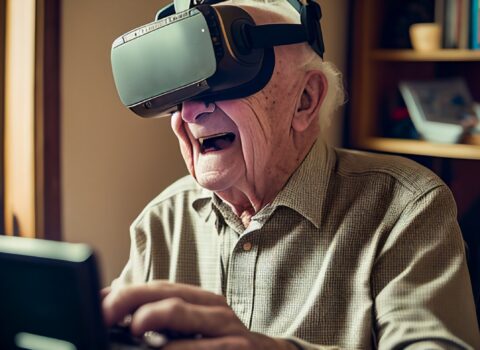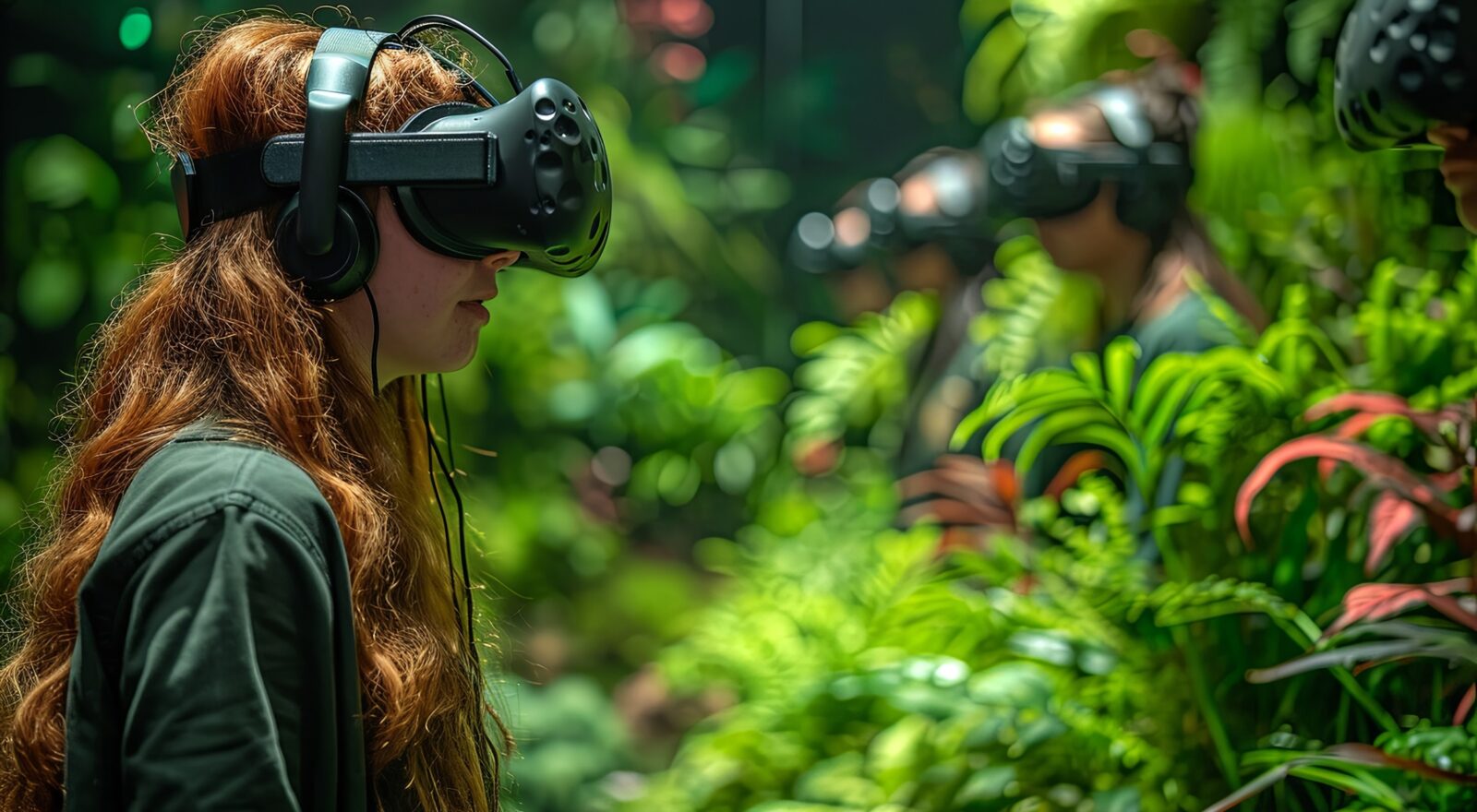
Virtual reality, physical well-being
Virtual reality now substantially shapes the collective imagination. On an imaginative level, it is perhaps the most futuristic of concepts: laser projections, holograms, simulations, augmented reality, and three-dimensional helmets are part of a baggage of images and concepts in which the boundaries between science and science fiction, between research dreams and established results, blur.
Virtual reality as a keyword for Digital Health & Wellbeing
No wonder, then, that also at the “Digital Health & Wellbeing” Center, research on virtual reality is a frontier technology: in its various applications to – primarily mental, but also physical –health and well-being many results are yet to come. The center’s lresearch is moving toward the use of virtual reality for the management of anxiety and depression in various population groups. The goal is stress reduction and the induction of a state of relaxation.
For now, the main case studies are two, in addition to one that has “moved outside” the center: a project with university students, one with the residents of a nursing home, and one, which became a start-up, with boys and girls with an autism spectrum disorder and their families.
In the case of the students, the relaxing effect of a virtual experience in natural environments was to be investigated in conjunction with – and independently of – traditional relaxation techniques: the research question aimed to evaluate and measure visor usefulness. The results showed an overwhelmingly positive impact of virtual reality: specifically, a greater reduction in anxiety and better activation was seen in those who had the virtual experience (even more markedly in those who were able to personalize their experience) with respect to the control group.
A second case study involved some seniors with cognitive impairment residing in the “Margherita Grazioli” nursing home in Povo. The design of a relaxing environment must – all the more so with fragile subjects – meet strict requirements, defined by the still rather sparse psychology literature on the subject.
Finally, a third case took off from the research center and became a start-up mong healthcare services providers, applying virtual reality as a tool to support the treatment of boys and girls with an autism spectrum disorder. In this area in particular, virtual reality can be a key support tool: the diagnosis of autism spectrum disorder now affects one in 77 children; centers specializing in the treatment of this disorder are few and poorly distributed, and specialized staff are limited. With the cuts we are seeing in health care, supportive technology that can help the – increasingly fewer – physicians, psychotherapists, nurses and Health and Human services operators becomes essential. The experience that was developed by Meeva ltd. consisted of a multiplayer virtual therapy to be carried out remotely, in which a game is created in which the therapist – equipped with their own avatar – interacts with avatars of the kids; the virtual experience aims to reproduce the therapy they carry out in the real world, with the advantages of a customizable virtual world (disturbing factors, dangers, difficulties and fun challenges).
Feedback from those involved
Having a special focus on mental well-being, this virtual reality depends even more stringently than other applications on people’s feedback and objective indicators. For this reason, a careful evaluation was carried out for each case analyzed: university students were administered structured questionnaires and were interviewed concerning both their virtual experience and the evaluation of the software and hardware aspects of the experiment. In the case of the nursing home residents, a focus group including researchers, caregivers and patients was set up.
As for the “objective indicators,” these are nothing more than the physiological data that can be recorded by special sensor equipment: in the case of the experiment with the students, a smartwatch was used to record the subject’s heart rate. For the future, there are plans to refine these readings with sensors for peripheral temperature, muscle activity, chest and abdominal breathing, etc.
In short, biometric, quantitative and qualitative data are the key parameters for an assessment of virtual environments: technology research at Fbk is always in close connection with the human element. Again, there is no such thing as a useful technology that is simply “imposed” by the technical knowledge of software engineers, psychologists and health care providers, but technology that is constantly readjusting and improving based on feedback from those for whom it was created: people.

